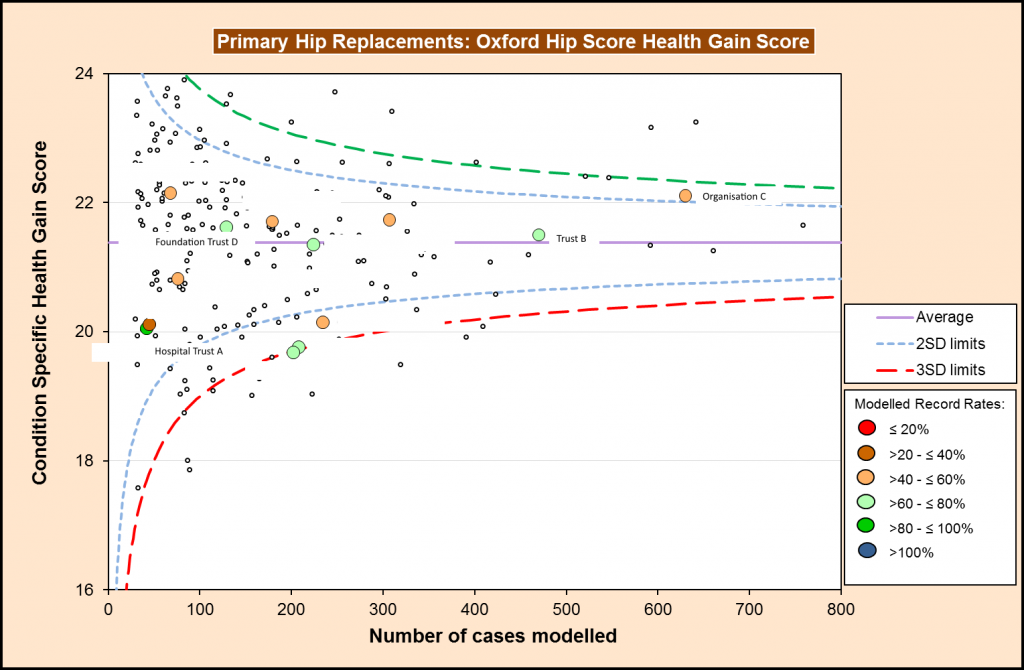NEQOS subscribers can benefit from a report published alongside each release of national Patient Reported Outcome Measures (PROMs) data through 2015/16, informing them of the likelihood that the Best Practice Tariff (BPT) for primary hip and knee replacement will be payable to NHS providers.
Best practice tariffs were originally introduced by the Department of Health in 2010/11 (although the scheme has evolved since then) and are paid to providers in place of normal tariffs, if best practice guidelines for treatment are followed. ‘Best practice’ is defined as care that is both clinically and cost effective, and is different for each procedure. The BPT for primary hip and knee replacement is only one of a list of BPTs and is designed to reduce the unexplained variation between providers in terms of the outcomes of surgery as reported by patients.
There were significant changes to the National Tariff system in 2015/16, with providers being able to opt for two options: to stay on the ‘Default Tariff Rollover’ (DTR) or to opt for the ‘Enhanced Tariff Option’ (ETO).
The BPT criteria for the DTR stayed the same as in 2014/15 and for primary hip and knee replacement these were:
1) Average PROMs Health Gain for the Oxford Hip (OHS) & Oxford Knee Scores (OKS) are not significantly lower than national norms.
2) Minimum data submission standards are met:
PROMs participation rate of at least 50%;
- National Joint Registry (NJR) compliance rate of at least 75%;
- NJR unknown consent rate below 25%.
BPT guidance recommended:
- Where all these criteria are met, the full tariff is payable.
- Where criteria are not met, a ten percent reduction in tariff will be payable.
For providers opting for the ETO, the main change for the hip and knee replacement BPT is:
- The criteria for National Joint Registry (NJR) thresholds for both compliance and consent rates are increased from 75% to 85% in 2015/16
Therefore, in 2015/16 payment for these BPTs are made based on trusts meeting the following criteria:
- the provider not having an average health gain significantly below the national average
- the provider adhering to the following data submission standards:
- a minimum patient-reported outcome measures (PROMS) participation rate of 50%
- a minimum National Joint Registry (NJR) compliance rate of 85%
- an NJR unknown consent rate below 15%.
Whilst the criteria for trusts to receive BPT payments have been updated, the methodology to the calculate the BPT is consistent with the approach applied in the ‘2014/15 National Tariff Payment System’.
As well as assessing the data and identifying which subscribers will and will not meet BPT criteria, NEQOS also specifies the areas where the subscriber has exceeded – or failed to meet – the standard scores.
As an example, the Figure below is an anonymised funnel chart which displays the North East & North Cumbria regional organisations’ comparative scoring on the Oxford Hip Scores scale.
To find out how NEQOS’ expertise can support your organisation in achieving better knowledge, better care and better outcomes, please leave your contact details here.

